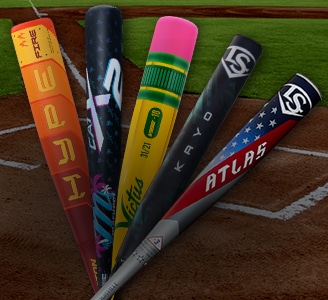How to Buy Lacrosse Arm Protection
When the game gets intense, you want to make sure your arms are protected. Learn the differences between arm pads, arm guards and elbow pads so you can be guarded on the field.

The high-intensity nature of lacrosse is a spectacle to see. Players furiously run up and down the field, passing and shooting the ball at high speeds, all while defenders try to swat or intercept the ball to swing possession in their favor. The physicality of the game means that lacrosse players need the proper protective gear.
During play, your arms can be exposed, so having the right arm protection is necessary to have fun and stay in the game. Arm padding is more prevalent in men’s lacrosse than women’s, due to the differences in physical play. For example, in men’s lacrosse, players are allowed to body check one another, so some players prefer the additional protection.
There are three styles of arm protection available with varying levels of padding, coverage and fit. These differences make some models better suited for certain positions and playing styles, but the ultimate goal is to find a happy medium between protection and maneuverability.
“Having that mobility is huge in lacrosse,” says DICK’S Sporting Goods Associate and former collegiate lacrosse player Ryan Wallace. “Mobility is what allows you to cradle, shoot and move your arms easier, which is pivotal to your on-field performance.”
With coverage and flexibility as your driving forces, you can better choose the arm protection that suits your playing needs.
ARM GUARDS
This style of arm protection provides lacrosse players with the most padding and coverage from the upper bicep down to the upper portion of the wrist. Arm guards feature a hard-shell plastic on the exterior surface, giving them added resistance against an opponent’s check. The increased padding and protection can give players more security, making arm guards a favorite among attackmen who typically endure the most action during a game, as well as possession-minded players who garner more attention (i.e. checks) from the defense.
Given their total-coverage design, arm guards are also a good recommendation for youth lacrosse players.
“As a youth player, you need that coverage,” Wallace says, “because you don’t want to start off by forming bad habits. As you get older and progress in the game, you’ll start to gain a little more flexibility and understanding of what coverage you prefer.”
Arm guards also lend themselves to what Wallace calls “the armadillo effect,” where youth players pad themselves with ample coverage so that there are little-to-no gaps between the end of the shoulder pad and start of the arm protection.
ARM PADS
Arm pads are going to cover less of your arm, but what you lose in coverage you gain in range of motion. The padding featured on lacrosse arm pads is more compact and condensed than that of the traditional arm guard, and is not enclosed in a hard-shell exterior. Despite the lack of a hard shell, the padding still remains secure against stick or body checks.
This lightweight yet functional protective gear covers the mid-bicep down to mid-forearm, and is designed to give players more mobility. The increased range of motion, combined with the overall lighter fit, makes arm pads a go-to-choice for midfielders and defensemen looking for some coverage and flexibility. Faster, finesse-oriented players also typically choose arm pads, since they are generally willing to give up some padding for better arm movement.
ELBOW PADS
The final style of arm protection, elbow pads, are a player’s best option when it comes to maximum maneuverability. Because of the limited coverage and minimal padding, elbow pads allow for the widest range of motion among the three types of arm coverage.
The condensed padding featured on elbow pads efficiently protects the elbow, but doesn’t provide coverage to the forearm or bicep. Elbow pads can be the preferred choice of defensemen and other faster players on the field. Because of their limited coverage, however, it’s advised that athletes refrain from wearing elbow pads at the youth level.
While each of the three styles have their own unique qualities, there are some universal features that players can look for. No matter which style of padding you prefer, look for protective gear that offers an appealing range of motion in a lightweight form while also carrying enough ventilation to help keep you cool throughout the game. Effective ventilation can also help keep your pads from getting that stinky sweat stench, which is universally unappealing, regardless of protection model.
You should also make sure your lacrosse arm gear fits properly with secure strapping and sizing. Wallace stresseds that during the course of a game, the last thing you want is to have to keep adjusting your pads due to a loose fit. “At the same time, though,” he says, “you don’t want the pad to be so tight that you can’t move your arm.”
Arm protection runs on the small-medium-large-XL scale and equipment is designated as right- or left-arm specific. Each brand follows its own sizing chart, so make sure to pay attention to their gear-specific measurements. In general, lacrosse arm padding has a proper fit when the portion covering the elbow sits directly over the joint and the padding doesn’t move, slide or cause discomfort when the arm is extended.
Lastly, as is the case with any additional protective equipment, if you have any questions about lacrosse arm protection, be sure to ask a coach or league official.
Arm protection can be a great addition to any player’s gear bag. Strap up with the proper gear this season to help propel your game to that next level.








